Sun Damage on Face: Sun Spot Damage Repair
Introduction
Sun damage to the skin poses an increasing concern, particularly in locales with high sun exposure, like Toronto, where year-round outdoor activities are prevalent. Prolonged exposure to UV rays heightens the risk of skin cancer and accelerates the aging process. As a result, many individuals experience sun damage, notably sun damage on face and chest areas, often exhibiting symptoms like dark spots, fine lines, and irregular pigmentation. These indications prompt individuals to seek diverse remedies for sun-damaged skin, particularly focusing on exposed regions like the face. This article explores the root causes of sun damage and its diverse manifestations—including whether freckles constitute sun damage—and provides insights into effective treatments to reverse these adverse effects, such as addressing sun damage on the face and sun spot damage repair.
What is Sun Damaged Skin?
Exposure to UV rays is a significant concern in places with high sun intensity, like Toronto, where people enjoy outdoor activities all year round. Extended sun exposure elevates the likelihood of developing skin cancer and accelerates aging, resulting in skin damage on the face and chest. Many individuals are left wondering how to fix sun-damaged skin and specifically seek treatment for a sun damaged chest. This article aims to comprehensively understand sun damaged skin, its causes, and effective treatments to reverse the effects.
PicoSure laser is a non-invasive and effective treatment for sun damaged skin. Sun damage can cause dark spots, age spots, and brown spots on the skin, often resulting from overexposure to UV rays from the sun. Prolonged UV exposure can also cause premature aging by breaking down elastin and collagen in the skin, leading to fine lines and broken blood vessels.
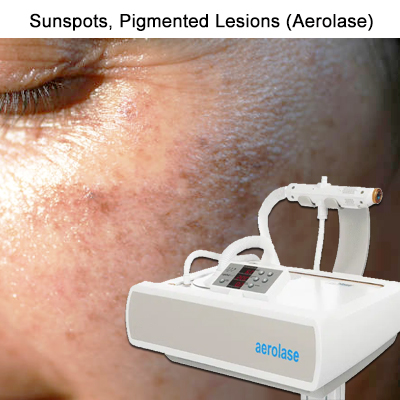
Sun protection, including wearing broad-spectrum sunscreen and avoiding prolonged sun exposure, is the first line of defence against sun damage. However, if you already have sun damaged skin, treatments are available to reverse the damage.
PicoSure laser works by stimulating collagen production and cell turnover in the skin, which can help reduce the appearance of fine lines, brown spots, and other signs of aging caused by sun damage. Chemical peels are also an effective treatment for sun damaged skin, as they can help remove the outer dead skin cell layers and promote cell turnover.
In addition to professional remedies, it is essential to maintain a good skincare routine at home, including using products that contain antioxidants and ingredients that promote skin cell renewal.
Book Your Free Consultation Today Or Call (647) 560-9233
LASER SUN DAMAGE TREATMENT FOR SUN DAMAGED SKIN, PHOTOAGING
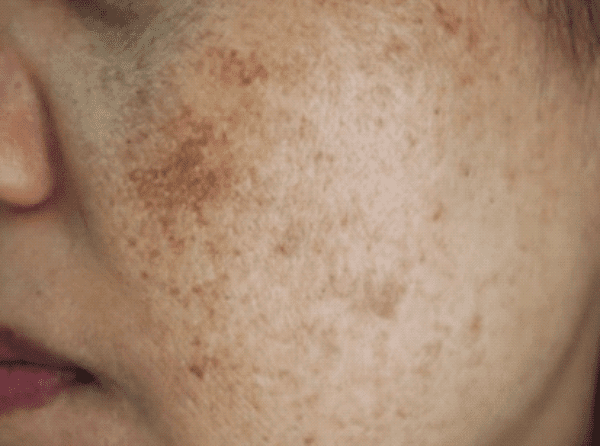
Dermatologists refer to sun damaged skin by several names, including photoaging, photodamage, solar damage, or sun damage.
Irregular areas of reddish-brown pigmentation characterize poikiloderma. It’s most common on the neck and upper chest in chronically sun-exposed areas.
It happens when ultraviolet light (UV) from the sun or tanning beds hits skin unprotected by sunscreen, causing DNA changes at a cellular level. Because sun damage happens in the deepest layers of the skin—the dermis—it can take years before the damage surfaces and becomes visible. The result of these UV light rays permanently damages the skin’s structure.
Signs of sun damage begin in the teens to early twenties. Symptoms of sun damaged skin include the following:
- Wrinkling
- Pigmentation changes such as age spots, liver spots (solar lentigines) and freckles
- Loss of skin tone (decreased elasticity)
- Rough, uneven skin texture
- Broken capillaries (spider veins), usually around the nose and chest
- Redness and blotchiness
What is Sun Damaged Skin and Best Laser Sun Damage Treatment
The term “Sun Damaged Skin” is frequently used by dermatologists and skincare experts, but what does it mean? A little explanation is required to comprehend the entire sun damage spectrum properly. Sun damage is a term used to describe a range of skin alterations that directly result from sun and UV radiation exposure. Skin darkening, freckling, and skin cancer are all possible side effects of this exposure. This form of damage is not simply caused by the sun. Indoor tanning has been a popular pastime in recent decades but has also been linked to significant skin damage. At the same time, Photo-aging is a word used to describe a variety of changes to the skin that might be related to UV exposure. Sun exposure is responsible for 90% of the changes we label sun damaged skin.
Types of UV rays that Cause Sun Damaged Skin
UVA and UVB are the two types of UV radiation that cause sun damage.
UV rays of longer wavelength have an adverse effect on the skin, causing it to tan, but are not responsible for sunburn. These UVA photons are able to penetrate further down into the dermis and can lead to skin cancer and premature aging.
Sunburn is caused by UVB (shorter-wave) radiation, which also causes premature aging damage. Most skin malignancies are thought to be caused by UVB.
Consequences of Sun Damage
Has considerably more serious long-term skin consequences. Sun damage affects the skin’s capacity to keep its critical components looking young and healthy (antioxidants, essential fatty acids, ceramides, hyaluronic acid, and vitamins).
In addition to potentially fatal skin cancer, unprotected sun exposure from UVA and UVB radiation have long-term repercussions such as:
- Skin discolorations and uneven tone.
- Increased fine lines and wrinkles.
- Dry, thin, creepy-looking skin.
- Buildup on the surface layer results in dull, congested skin.
UVA sun damaged skin is considered more insidious because you don’t feel any pain or discomfort from it, yet it still hurts your skin. This produces skin irregularities over time, leading to the most severe forms of skin aging and a higher risk of skin cancer.
Laser For Sun Damage Treatment
Minimize the Visible Signs of Sun Damage
Although sun damage cannot be reversed, some products can help reduce the look of its aging effects in unexpected ways, such as:
- Exfoliant with AHA or BHA: Removes the buildup of unhealthy skin caused by sun exposure, restoring smoothness, enhancing skin tone, and resulting in a more radiant complexion.
- Retinol: Reduces the appearance of wrinkles and other symptoms of aging caused by the sun’s damaging effects.
- Vitamin C brightens uneven skin tone caused by sun exposure dramatically.
- Antioxidant serum: Protects skin from environmental damage and improves the effectiveness of SPF products.
The laser for sun damage treatment encourages tissue renewal and collagen synthesis by injuring the skin in a regulated way. Lasers produce single-colour, high-energy light beams. Lasers have precise chemical targets, unlike sunlight, which has a broad light spectrum and damages at random. The target molecules for skin resurfacing lasers are usually water, hemoglobin, and melanin.
IR light is absorbed by water. Longer IR rays are absorbed strongly and do not pass through the epidermis and upper dermis. Shorter ones, on the other hand, reach the lower dermis without harming the superficial layers.
Hemoglobin, the red pigment in your blood, absorbs visible light, remarkably green-yellow light. Melanin, the primary pigment in the epidermis, absorbs IR and visible UV wavelengths. Short IR lasers are minimally absorbed, making them suited for darker skin.
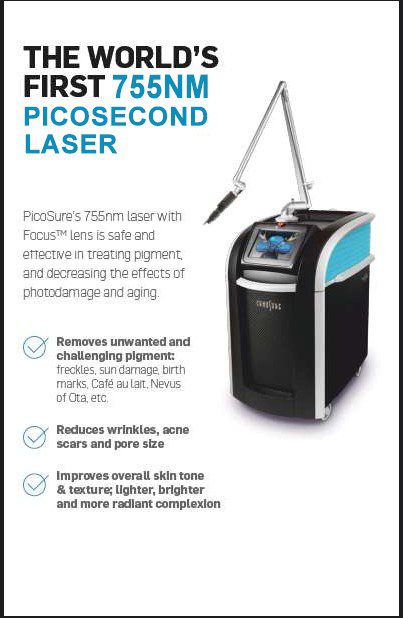
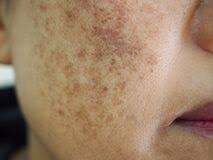
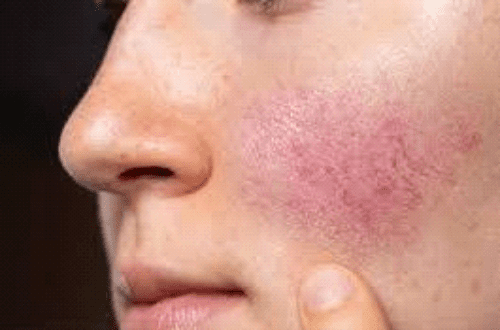
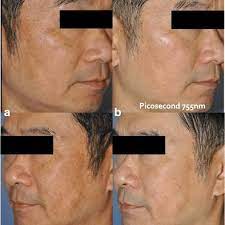
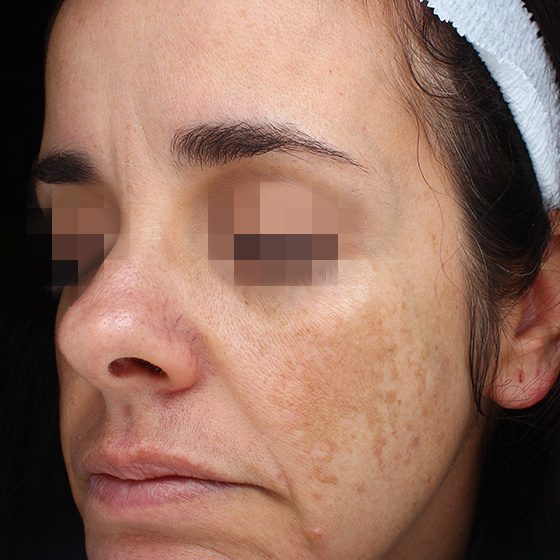
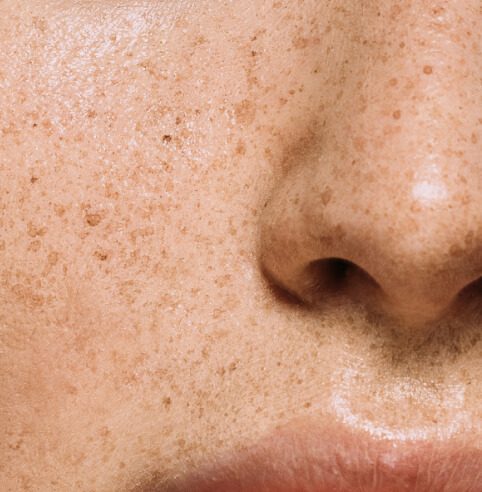
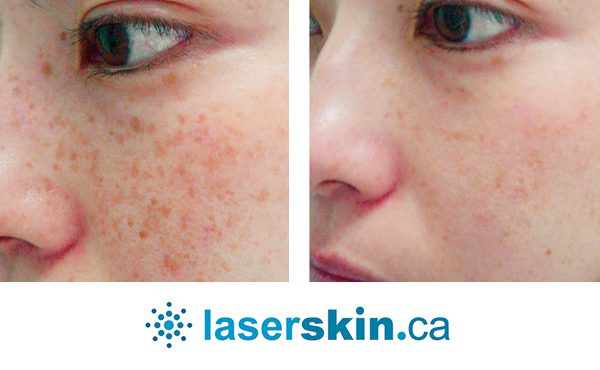
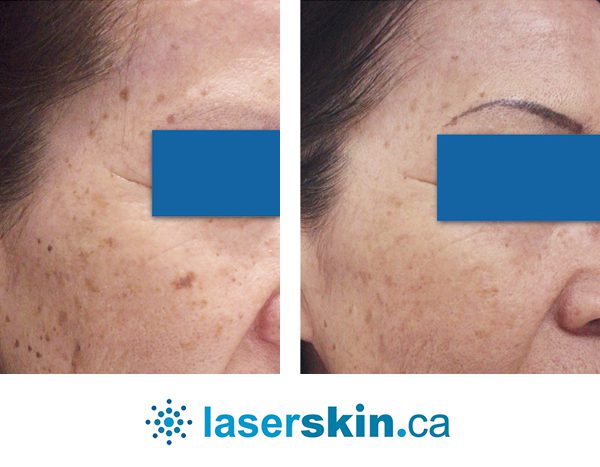
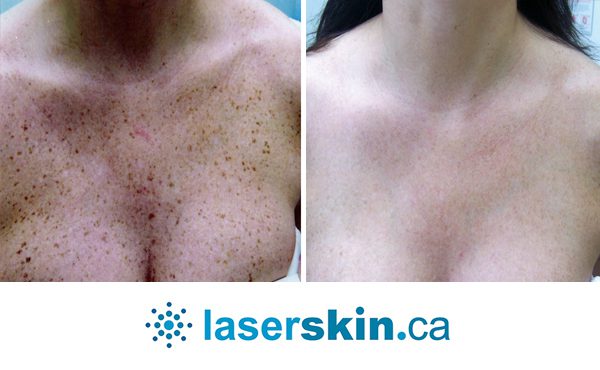

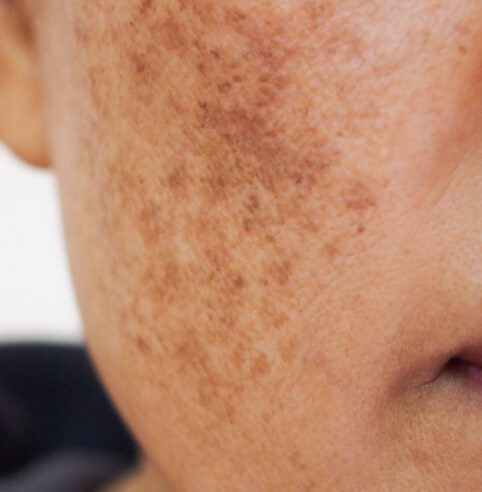
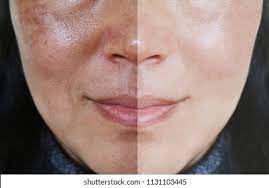
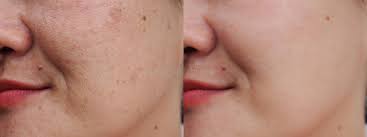
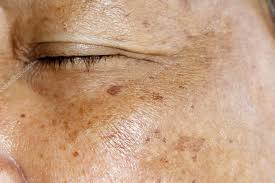
Q & A: Sun Damage on Face
What is the purpose of laser treatment for sun damaged skin?
Laser treatment for sun damaged skin is a cosmetic procedure that involves the use of a specialized laser to enhance the appearance of sun damaged skin. The laser is designed to target damaged skin cells and stimulate the production of new collagen and elastin fibres, thereby reducing the appearance of UV damage and improving the skin’s overall texture and tone.
How does sun-damaged skin laser treatment work?
Laser treatment for sun-damaged skin involves the delivery of laser energy to the epidermis in the form of targeted pulses. The damaged skin cells ingest the energy, thereby stimulating the production of new collagen and elastin fibres. This helps enhance the skin’s texture and tone, and reduces the appearance of sun damage.
What forms of sun damage can be improved by laser treatment?
Laser can be used to enhance a variety of skin issues, including sun spots, fine lines, wrinkles, and uneven skin tone and texture. In addition to improving the overall appearance of the skin, the laser can also reduce the visible symptoms of ageing.
Who would benefit most from laser treatment for sun-damaged skin?
Individuals with mild to moderate sun damage who wish to enhance the appearance of their skin are excellent candidates for laser treatment. It is essential that the individual have reasonable expectations regarding the outcome of the procedure.
Is laser therapy uncomfortable?
Any pain associated with laser treatment is typically brief and can be managed with topical numbing cream or a local anesthetic. The healthcare provider can collaborate with the individual to develop an individualized pain management plan.
How long does laser treatment for sun damaged skin take?
The duration of laser treatment depends on the treatment area’s size and location. The majority of procedures last between 30 and 60 minutes. During the initial consultation, the healthcare provider can provide a more precise estimate of the treatment duration.
What is the recovery period for sun-damaged epidermis following laser treatment?
After laser treatment, the majority of patients can promptly resume their normal activities. However, some redness, swelling, or peeling of the epidermis may occur for a few days. After the procedure, the healthcare provider can provide specific care instructions for the epidermis.
How long do laser treatment last?
Depending on the individual’s skin type and sun exposure behaviours, the effects of laser treatment for sun-damaged skin can last from a few months to several years. It may be necessary to perform the procedure periodically to preserve the results. The healthcare provider can provide guidance regarding the frequency with which the procedure should be repeated to achieve optimal results.
What are the potential side effects of laser treatment?
Minimal hazards are associated with laser treatment, including temporary redness, swelling, and peeling. In rare cases, scarring or pigmentation alterations may occur. During the initial consultation, the healthcare provider can discuss the risks and benefits of the procedure with the patient.
What is the cost of laser treatment for sun-damaged skin?
The cost of laser treatment for sun-damaged skin varies depending on the size, location, and number of treatments required. In Toronto, the average cost of laser treatment for sun-damaged skin ranges between $500 and $1000 per treatment. During the initial consultation, the healthcare provider can provide a more accurate estimate of the procedure’s cost. It is essential to note that sun damage can be treated with lasers.
Conclusion
In wrapping up, it’s vital to recognize the stealthy nature of sun damage, particularly from the UVA rays prevalent in places like Toronto, which can be intense even without immediate signs. Long-term health risks include potential skin cancers, premature aging, and dermatological concerns such as pigmentation anomalies and creasing. For those facing the aftermath of solar exposure, there are targeted interventions. Lasers specifically designed for sun damage on face can effectively restore dermal health, while treatments aimed at sun spot damage repair and rejuvenating a sun-damaged chest are becoming increasingly sophisticated. Thus, proactive measures, including consistent use of sunscreen and seeking early treatment options, are essential steps in preventing and remedying the effects of UV exposure. With the right approach, the signs of sun damage can be addressed, offering a clearer, healthier complexion.


